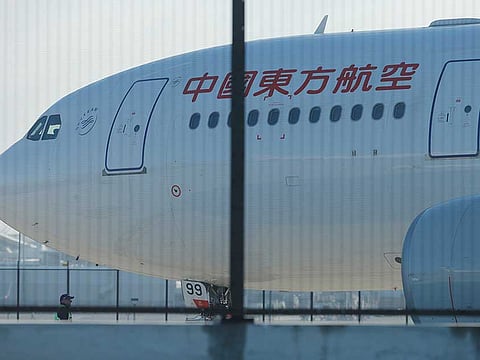China airlines, travel firms need Plan B
Outbreak of new virus will upend jet-setting growth of last decade and more

Wuhan (China): There’s never a good time for the outbreak of a deadly virus, but this one is particularly bad. China’s Lunar New Year is often dubbed the world’s largest migration, a stretch of weeks when hundreds of millions of people visit their families.
Before the pandemic started spreading, officials were expecting 3 billion aeroplane and train trips during the holiday rush between January 10 and February 18. Millions more have gone abroad.
Little wonder, then, that the travel industry is suffering. With the death toll up to 25 and more than 800 infected, tourists are staying home. Some have no choice: The government has put seven cities on lockdown and airports are stepping up screening measures. On Friday, China ordered all travel agencies to suspend sales of domestic and international tours.
Airlines catch the turbulence
Shares of China Southern Airlines Co. — the carrier most exposed to the site of the outbreak — have slid 14 per cent since the second death from the virus was confirmed, while Cathay Pacific Airways Ltd., which said it would waive fees for tickets to and from the mainland, has slumped 7.6 per cent. The country’s largest online travel agency, Trip.com Group Ltd. has tumbled 12 per cent.
If the Sars outbreak of 2003 is any guide, things could get even worse. In May of that year, Chinese air passenger traffic fell 71 per cent, according to Goldman Sachs Group Inc. Bernstein Research cited concerns of a repeat outcome when it cut Trip.com’s rating one notch to “market perform” last week.
The Nasdaq-listed company, which changed its name from Ctrip.com last year, issued a statement saying it would refund travellers who’ve been diagnosed, or those in close touch with them.
More problems to deal with
The hope is that, like Sars, the turbulence will eventually pass. For Trip.com, however, the business challenges are bigger than the coronavirus. In recent years, the company has struggled to keep up with competition from digital rivals like Meituan Dianping and Alibaba Group Holding Ltd.
Few travel companies have benefited more from China’s transition to the world’s biggest source of tourists in 2012. Despite the trade war and Hong Kong’s protests, China’s outbound tourism numbers have continued to rise.
According to Euromonitor International, 108.39 million overseas trips were taken last year, a 9.5 per cent gain, after surging 11.7 per cent in 2018. Trip.com now makes up a quarter of its total sales from outbound Chinese visitors, from under 15 per cent five years ago.
Alibaba’s super-app
But the hotel-booking sector is getting crowded. Meituan Dianping has recently overtaken Trip.com as China’s top site, just five years after the food-delivery giant started dabbling in the business. Meituan now has 47 per cent of China’s market, ahead of Trip.com, with 34 per cent.
Now, Meituan is moving further into Trip.com’s territory with luxury hotels, while chains like Marriott International Inc. are pushing for direct booking on their China websites. Alibaba said part of the $13 billion it raised from its Hong Kong listing in November would go toward fliggy.com, its online travel group site.
If there’s any lesson to be gleaned from all this, it’s the benefit of diversification. While China’s super-app business model has arched some eyebrows (how can one company possibly provide digital payments, taxis, food delivery, massages and pet grooming?) there’s a decent case to be made for having some crisis-proof subsidiaries.
Consider AirAsia Group Bhd, Southeast Asia’s most successful budget airline, which is setting up a regional fast food franchise.
Plans could already be underway for Trip.com to diversify its investor base, with the company discussing plans to go public in Hong Kong. Here, Alibaba is a successful model. With its second listing, the company is now closer to its Chinese end users, and Alibaba’s New York-listed stock has soared 14 per cent.
The four-month span of the Sars outbreak shows how quickly things can turn around: While China’s growth dipped in the second quarter of 2003, it swiftly resumed in the following months. Given how much more important the Chinese shopper is to the economy now, the damage could be more painful.
A 10 per cent fall in discretionary transportation and entertainment could shave 1.2 percentage points from China’s growth domestic product, according to “back of the envelope” estimates by S&P Global Inc. Hong Kong retailers and restaurants, just coming off the pain of last year’s protests, were already suffering.
For those companies that enjoyed the fast-rising Chinese consumer, it may be time to devise a plan B.
Sign up for the Daily Briefing
Get the latest news and updates straight to your inbox

